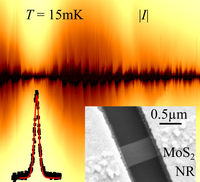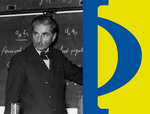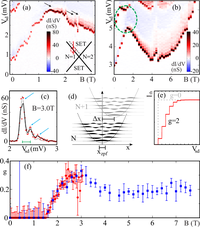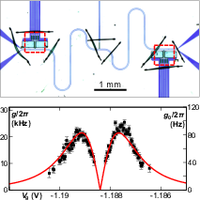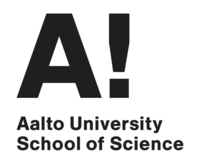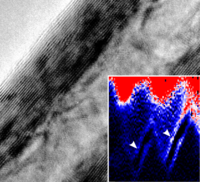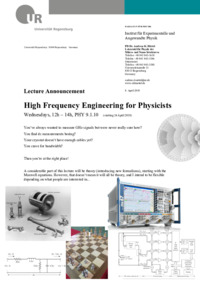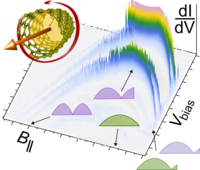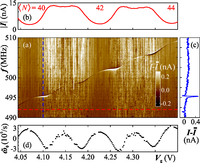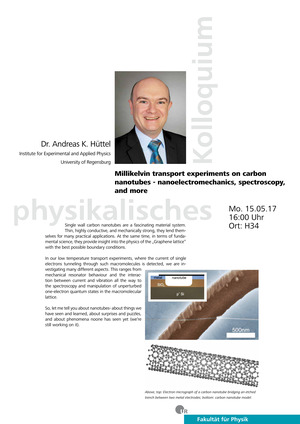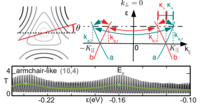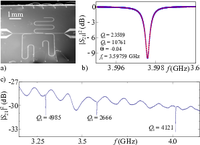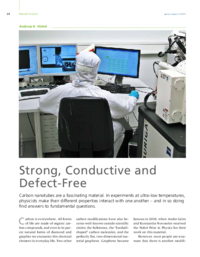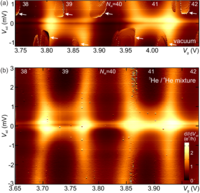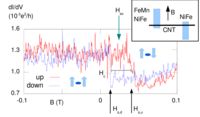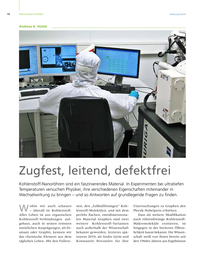main page
research
publications
team
news
contact
teaching
jobs
picture gallery
alumni
internal wiki
research group
prof. (em.) D. Weiss
research group
prof. F. Kuemmeth



news blog
Advanced Materials published: "Non-destructive low-temperature contacts to MoS2 nanoribbon and nanotube quantum dots" (posted 10 January 2023)
Molybdenum disulfide MoS2 is often discussed as a groundbreaking material for electronics applications. As bulk crystal or as 2D layer material similar to graphene, it is an excellent semiconductor with strong spin-orbit interaction. At strong doping it even becomes intrinsically superconducting, with possibly interesting topological properties.
So how about using MoS2 for quantum electronics, single electron devices, or (charge, spin, or valley) qubits? There's already enough science fiction literature out there mentioning "molycircuits"... Well, a small problem stands in the way. It turns out that the electronic band structure of the material makes reaching quantum confinement, i.e., discrete, addressable electronic quantum states, quite hard. The chip structures need to be built at very small scale, difficult to reach with MoS2 flakes on a chip surface, and so far no research group has managed to do this in a controlled way.
That's exactly why we are interested in MoS2 nanotubes. They can be grown clean and straight, with diameters down to 20nm - which automatically confines charge carriers in one more direction compared to a two-dimensional MoS2 flake. What remains is to restrict motion of the charge carriers along the nanotube axis and to make good metallic contacts. However, it turns out that making good contacts to MoS2 is hard - either your metals form a Schottky barrier, or they react with the MoS2 and destroy its crystal structure.
In our work, we show that this problem has now been solved. Using a thin layer of the semimetal bismuth, we obtain contacts which remain transparent even at cryogenic (millikelvin) temperatures and leave the structure of MoS2 below and next to them intact. This makes transport spectroscopy measurements on a MoS2 quantum dot forming within the nanotube possible. We indeed observe quantum dot behaviour; the temperature dependence of the Coulomb oscillations of conductance indicates that we reach electronic tunneling through single, discrete quantum states below a temperature of T=100mK.
With this, we have made a big step towards controllable charge, spin, or even valley quantum states in MoS2. Next we need to miniaturize our devices even further, and increase our measurement resolution to be able to analyze the electronic level spectrum in magnetic fields.
"Non-destructive low-temperature contacts to MoS2 nanoribbon and nanotube quantum dots"
R. T. K. Schock, J. Neuwald, W. Möckel, M. Kronseder, L. Pirker, M. Remskar, and A. K. Hüttel
accepted for publication by Advanced Materials (doi:10.1002/adma.202209333); arXiv:2209.15515
(PDF,
supplementary
information)
Video from Walter Schottky Prize award ceremony now online (posted 24 October 2022)
The video recording of the Walter Schottky Prize award ceremony in June is finally online. Enjoy :)
Walter Schottky prize; return to Regensburg with DFG Heisenberg grant (posted 26 November 2020)
As an important consequence, I am looking for PhD students. Two positions and projects are available:
- "Microwave optomechanics of the transversal carbon nanotube vibration"
- "Transport spectroscopy and hybrid devices of transition metal dichalcogenide nanotubes"
In case you are interested, please have a look at the announcements, see the links above or our jobs page, and send me an e-mail!
Further information:
- press release of the German Physical Society (in German)
- press release of University of Regensburg regarding the Walter Schottky Prize (in German)
- list of Walter Schottky Prize recipients (in German)
- press release of University of Regensburg regarding the Heisenberg grant (in German)
- home page of my research group
- my homepage
PRB published: "Magnetic field control of the Franck-Condon coupling of few-electron quantum states" (posted 19 October 2020)
With such a large frequency, the harmonic oscillator is at typical dilution refrigerator temperatures T < 100mK fully quantized. The mechanics now becomes visible in the transport spectrum of the quantum dot within the carbon nanotube as so-called Franck-Condon sidebands: For current to pass through the nanotube, an electron has to tunnel onto the quantum dot and then off it again. In our nanomechanical system, however, the mechanical equilibrium position depends on the electrostatic forces on the nanotube, and thus on the charge on it - the equilibrium position for N electrons is different from the one for N+1 electrons. This means that tunneling in is suppressed by a geometric factor describing this coupling, i.e., the limited overlap between the macromolecule wavefunction in both situations. If we provide enough energy to reach excited vibrational states, this suppression is partially lifted. Thus, as function of applied bias voltage, we see a series of steps in the current or lines in the differential conductance.
In our article, we demonstrate for the first time Franck-Condon sidebands in a clean carbon nanotube quantum dot with known absolute number of trapped electrons. We evaluate the coupling parameter and see that it depends on a magnetic field, but also on the precise electronic state that the electrons tunnel through. The so-called valley quantum number turns out to be crucial here; it is related to the angular momentum of the electron. Comparing our evaluation results with our previous calculations on the distribution of electrons along the nanotube axis, we propose a model that describes the coupling parameter as function of magnetic field for different quantum states. While the model is a simplification, it nevertheless is clearly able to qualitatively reproduce our experimental results of a tunable electron-vibron coupling.
"Magnetic field control of the Franck-Condon coupling of few-electron quantum states"
P. L. Stiller, A. Dirnaichner, D. R. Schmid, and A. K. Hüttel
Physical Review B 102, 115408 (2020);
arXiv:1812.02657
(PDF)
Top Alexander von Humboldt foundation ranking for Regensburg University (posted 19 October 2020)
After the top position in the Nature Index 2019 and repeated great rankings in physics in the DFG Förderatlas (2012, 2018), there's another excellent news for Regensburg. In the so-called Humboldt-Ranking 2020, listing where most of the foreign scholars with an Alexander von Humbold foundation scholarship go to pursue their research in Germany, Regensburg is at position 1 of the natural sciences! The Alexander von Humboldt foundation sponsors advanced career stages, from post-doc all the way to professor. Congratulations everyone!
Press release (in German) on our recent Nature Communications (posted 29 April 2020)
Read it on the university web page!
(A summary in English can be found in a previous blog post.)
Nature Communications published: "Quantum capacitance mediated carbon nanotube optomechanics" (posted 9 April 2020)
Still, achieving such a coupling and controlling it, without resonantly driving the nanotube to large motion amplitudes, is for many reasons an attractive idea. A nanotube is a very good beam resonator, storing energy coherently for a long time; the mechanics could be used to translate quantum information between different quantum mechanical degrees of freedom. And both single electrons trapped within semiconductors (as a carbon nanotube) and superconducting coplanar microwave circuits are hot candidates for quantum computation architectures, and the topic of much research worldwide.
From this background we are excited to present a first optomechanical experiment where the motion of a suspended single carbon nanotube has been coupled to a superconducting coplanar microwave cavity; our work has been published in Nature Communications. Using the quantization of electric charge, we have been able to amplify the interaction between the two systems, vibration and electromagnetic field, by a factor 10000 compared to simple geometric predictions - and this is by far not the limit yet on what is achievable with our method. In addition, the coupling is controllable, and can be switched on and off quickly.
We obtain a so-called dispersively coupled optomechanical system - novel and exciting on one hand because of the miniaturization of the mechanical part and the coherent single electron effects, but well known on the other hand, since a huge body of theoretical and experimental research on larger (up to macroscopic scales) optomechanical systems exists. There, it has been shown that the coupling can be used for cooling of the vibration, for coherent amplification of signals, or even for arbitrary preparation of quantum states. Based on our results, also the quantum control of the string-like nanotube vibration will be reachable in the near future.
"Quantum capacitance mediated carbon nanotube optomechanics"
S. Blien, P. Steger, N. Hüttner, R. Graaf, and A. K. Hüttel
Nature Communications 11, 1636 (2020)
Visiting professor at Aalto University, absence from Regensburg (posted 2 March 2020)
For Regensburg this means that I am currently not accepting any students for thesis projects anymore, and that it may be quite difficult to find time for oral exams (like those "Modulprüfungen").
pssRRL accepted: Coulomb Blockade Spectroscopy of a MoS2 Nanotube (posted 12 August 2019)
Everybody is talking about novel semiconductor materials, and in particular the transition metal dichalcogenides (TMDCs), "layer materials" similar to graphene. With a chemical composition of TX2, where the transition metal T is, e.g., tungsten W or molybdenum Mo, and the chalcogenide X is, e.g., sulphur S or selenium Se, a wide range of interesting properties is expected.
What's by far not so well known is that many of these materials also form nanotubes, similar to carbon nanotubes in structure but with distinct properties inherited from the planar system. Here, we present first low temperature transport measurements on a quantum dot in a MoS2 nanotube. The metallic contacts to the nanotube still require a lot of improvements, but the nanotube between them acts as clean potential well for electrons.
Also, our measurements show possible traces of quantum confined behaviour. This is something that has not been achieved yet in planar, lithographically designed devices - since these have by their very geometric nature larger length scales. It means that via transport spectroscopy we can learn about the material properties and its suitability for quantum electronics devices.
A lot of complex physical phenomena have been predicted for MoS2, including spin filtering and intrinsic, possibly topologic superconductivity - a topic of high interest for the quantum computing community, where larger semiconductor nanowires are used at the moment. So this is the start of an exciting project!
"Coulomb Blockade Spectroscopy of a MoS2 Nanotube"
S. Reinhardt, L. Pirker, C. Bäuml, M. Remskar, and A. K. Hüttel
Physica Status Solidi RRL, doi:10.1002/pssr.201900251 (2019); arXiv:1904.05972 (PDF)
Where's the best sciences research in Germany? Here in Regensburg! (posted 2 July 2019)
Lecture announcement: High Frequency Engineering for Physicists (posted 2 May 2019)
- Concepts and formalisms for the frequency range 10MHz - 50GHz
- Handling equipment for this frequency range, designing devices and measurements
- Using this frequency range in a (millikelvin) cryostat
See you next wednesday!
Press release (in German) on our recent PRL (posted 30 April 2019)
(A summary in English can be found in a previous blog post.)
PRL published: Shaping electron wave functions in a carbon nanotube with a parallel magnetic field (posted 27 February 2019)
When a physicist thinks of an electron confined to a one-dimensional object such as a carbon nanotube, the first idea that comes to mind is the „particle in a box“ from elementary quantum mechanics. A particle can behave as a wave, and in this model it is essentially a standing wave, reflected at two infinitely high, perfect barrier walls. The mathematical solutions for the wave function describing it are the well-known half-wavelength resonator solutions, with a fundamental mode where exactly half a wavelength fits between the walls, a node of the wave function at each wall and an antinode in the center.
In this publication, we show how wrong this first idea can be, and what impact that has. In a carbon nanotube as quasi one-dimensional system, an electron is not in free space, but confined to the lattice of carbon atoms which forms the nanotube walls. This hexagonal lattice, the same that also forms in planar form graphene, is called bipartite, since every elementary cell of the lattice contains two carbon atoms; one can imagine the nanotube wall as being built out of two sub-lattices, with one atom per cell each, that are shifted relative to each other. Surprisingly, the hexagonal bipartite lattice does not generally support the half-wavelength solutions mentioned above, where the electronic wave function becomes zero at the edges. In each sublattice, we can only force the wave function to zero at one end of the nanotube "box"; its value at the other end remains finite. This means that the wave function shape for each of the two sublattices is more similar to that of a quarter wavelength resonator, where one end displays a node, the other an antinode. The two sublattice wave functions are mirrored in shape to each other, with node and antinode swapping position.
When we now apply a magnetic field along the carbon nanotube, a magnetic flux enters the nanotube, and the boundary conditions for the electron wave function change via the Aharonov-Bohm effect. Astonishingly, its shape along the carbon nanotube can thereby be tuned between half-wavelength and quarter-wavelength behaviour. This means that the probability of the trapped electron to be near the contacts changes, and with it the tunnel current, leading to a very distinct behaviour of the electronic conductance. It turns out that our measurement and the corresponding calculations are agreeing very well. Thus, our work shows the impact of a non-trivial host crystal on the electronic behaviour, important for many novel types of material.
"Shaping electron wave functions in a carbon nanotube with a parallel magnetic field"
M. Marganska, D. R. Schmid, A. Dirnaichner, P. L. Stiller, Ch. Strunk, M. Grifoni, and A. K. Hüttel
Physical Review Letters 122, 086802 (2019), Editor's Suggestion; arXiv:1712.08545 (PDF, supplementary information)
Comp. Phys. Comm. published: "Lab::Measurement - a portable and extensible framework for controlling lab equipment and conducting measurements" (posted 18 October 2018)
Lab::Measurement is a collection of object-oriented Perl 5 modules for controlling lab instruments, performing measurements, and recording and plotting the resultant data. Its operating system independent driver stack makes it possible to use nearly identical measurement scripts both on Linux and Windows. Foreground operation with live plotting and background operation for, e.g., process control are supported. For more details, please read our article, visit the Lab::Measurement homepage, or visit Lab::Measurement on CPAN!
"Lab::Measurement - a portable and extensible framework for controlling lab equipment and conducting measurements"
S. Reinhardt, C. Butschkow, S. Geissler, A. Dirnaichner, F. Olbrich, C. Lane, D. Schröer, and A. K. Hüttel
Comp. Phys. Comm. 234, 216 (2019); arXiv:1804.03321 (PDF)
PRL accepted: Nanomechanical characterization of the Kondo charge dynamics in a carbon nanotube (posted 18 May 2018)
The Kondo effect is a many-body phenomenon at low temperature that results from a quantum state degeneracy, as, e.g., the one of spin states in absence of a magnetic field. In its simplest case, it makes a quantum dot, in our case a carbon nanotube with some trapped electrons on it, behave very different for an even and an odd number of electrons. At an even number of trapped electrons, no current can flow through the nanotube, since temperature and applied bias voltage are too low to charge it with one more elementary charge; this phenomenon is called Coulomb blockade. Strikingly, at odd electron number, when two degenerate quantum states in the nanotube are available, Coulomb blockade seems not to matter, and a large current can flow. Theory explains this by assuming that a localized electron couples to electrons in the contacts, forming a combined, delocalized singlet quantum state.
What carries the Kondo-enhanced current, and how does the electric charge now accumulate in the carbon nanotube? We use the vibration of the macromolecule to measure this. As also in the case of, e.g., a guitar string, the resonance frequency of a nanotube changes when you pull on it; in the case of the carbon nanotube this is sensitive enough to resolve fractions of the force caused by a single elementary charge. From the vibration frequency, as function of the electrostatic potential, we calculate the average number of electrons on the nanotube, and can then compare the odd and even number cases.
A surprising result of our evaluation is that the charge trapped on the nanotube behaves the same way in the even and odd occupation case, even though the current through it is completely different. Sequential tunneling of electrons can model the charge accumulation, and with it the mechanical behaviour. The large Kondo current is carried by virtual occupation of the nanotube alone, i.e., electrons tunneling on and immediately off again so they do not contribute to the charge on it.
"Nanomechanical Characterization of the Kondo Charge Dynamics in a Carbon Nanotube"
K. J. G. Götz, D. R. Schmid, F. J. Schupp, P. L. Stiller, Ch. Strunk, and A. K. Hüttel
Physical Review Letters 120, 246802 (2018); arXiv:1802.00522 (PDF, HTML, supplementary information)
Manuscript on Lab::Measurement submitted for publication (posted 11 April 2018)
"Lab::Measurement - a portable and extensible framework for controlling lab equipment and conducting measurements"If you're using Lab::Measurement in your lab, and this results in some nice publication, then we'd be very grateful for a citation of our work - for now the preprint, and later hopefully the accepted version.
S. Reinhardt, C. Butschkow, S. Geissler, A. Dirnaichner, F. Olbrich, C. Lane, D. Schröer, and A. K. Hüttel
submitted for publication; arXiv:1804.03321 (PDF, BibTeX entry)
FOSDEM 2018 talk: Perl in the Physics Lab (posted 8 January 2018)
Perl in the Physics Lab
Andreas K. Hüttel
Track: Perl Programming Languages devroom
Room: K.4.601
Day: Sunday
Start: 11:00
End: 11:40
Let's visit our university lab. We work on low-temperature nanophysics and transport spectroscopy, typically measuring current through experimental chip structures. That involves cooling and temperature control, dc voltage sources, multimeters, high-frequency sources, superconducting magnets, and a lot more fun equipment. A desktop computer controls the experiment and records and evaluates data.
Some people (like me) want to use Linux, some want to use Windows. Not everyone knows Perl, not everyone has equal programming skills, not everyone knows equally much about the measurement hardware. I'm going to present our solution for this, Lab::Measurement. We implement a layer structure of Perl modules, all the way from the hardware access and the implementation of device-specific command sets to high level measurement control with live plotting and metadata tracking. Current work focuses on a port of the entire stack to Moose, to simplify and improve the code.
Upcoming talk in the Regensburg physics colloquium (posted 8 May 2017)
"Millikelvin transport experiments on carbon nanotubes - nanoelectromechanics, spectroscopy, and more"
PRL accepted: Secondary electron interference from trigonal warping in clean carbon nanotubes (posted 16 September 2016)
Imagine a graphene "sheet" of carbon atoms rolled into a tube - and you get a carbon nanotube. Carbon nanotubes come in many variants, which influence strongly their electronic properties. They have different diameter, but also different "chiral angle", describing how the pattern of the carbon atoms twists around the tube axis. In our work, we show how to extract information on the nanotube structure from measurements of its conductance. At low temperature, electrons travel ballistically through a nanotube and are only scattered at its ends. For the quantum-mechanical electron wavefunction, metallic nanotubes act then analogous to an optical Fabry-Perot interferometer, i.e., a cavity with two semitransparent mirrors at either end, where a wave is partially reflected. Interference patterns are obtained by tuning the wavelength of the electrons; the current through the nanotube oscillates as a function of an applied gate voltage. The twisted graphene lattice then causes a distinct slow current modulation, which, as we show, allows a direct estimation of the chiral angle. This is an important step towards solving a highly nontrivial problem, namely identifying the precise
molecular structure of a nanotube from electronic measurements alone.
"Secondary electron interference from trigonal warping in clean carbon nanotubes"
A. Dirnaichner, M. del Valle, K. J. G. Götz, F. J. Schupp, N. Paradiso, M. Grifoni, Ch. Strunk, and A. K. Hüttel
accepted for publication in Physical Review Letters; arXiv:1602.03866 (PDF, supplemental information)
Nanotechnology accepted: Co-sputtered MoRe thin films for carbon nanotube growth-compatible superconducting coplanar resonators (posted 4 February 2016)
For quite some time we have been working on techniques to combine ultra-clean carbon nanotubes and their regular electronic spectrum with superconducting material systems. One of our objectives is to perform high-frequency measurements on carbon nanotube nano-electromechanical systems at millikelvin temperatures. With this in mind we have established the fabrication and characterization of compatible superconducting coplanar resonators in our research group. A serious challenge here was that the high-temperature process of carbon nanotube growth destroys most metal films, or if not, at least lowers the critical temperature Tc of superconductors so much that they are not useful anymore.
In the present manuscript, we demonstrate deposition of a molybdenum-rhenium alloy of variable composition by simultaneous sputtering from two sources. We characterize the resulting thin films using x-ray photoelectron spectroscopy, and analyze the saturation of the surface layers with carbon during the nanotube growth process. Low-temperature dc measurements show that specifically an alloy of composition Mo20Re80 remains very stable during this process, with large critical currents and critical temperatures even rising to up to Tc~8K. We use this alloy to fabricate coplanar resonator structures and demonstrate even after a nanotube growth high temperature process resonant behaviour at Gigahertz frequencies with quality factors up to Q~5000. Observation of the temperature dependent behaviour shows that our devices are well described by Mattis-Bardeen theory, in combination with dissipation by two-level systems in the dielectric substrate.
"Co-sputtered MoRe thin films for carbon nanotube growth-compatible superconducting coplanar resonators"
K. J. G. Götz, S. Blien, P. L. Stiller, O. Vavra, T. Mayer, T. Huber, T. N. G. Meier, M. Kronseder, Ch. Strunk, and A. K. Hüttel
accepted for publication in Nanotechnology; arXiv:1510.00278 (PDF)
DFG magazine "german research" publishes article about our research group (posted 26 January 2016)
"Carbon Nanotubes: Strong, Conductive and Defect-Free"
Carbon nanotubes are a fascinating material. In experiments at ultra-low temperatures, physicists make their different properties interact with one another - and in so doing find answers to fundamental questions.
Andreas K. Hüttel
german research 3/2015, 24-27 (2015) (PDF)
APL accepted: Liquid-induced damping of mechanical feedback effects in single electron tunneling through a suspended carbon nanotube (posted 14 September 2015)
One of the surprises that suspended, clean carbon nanotubes have in store is that they can start vibrating strongly at millikelvin temperatures without any applied radio-frequency driving signal. This was proposed theoretically several years ago by Usmani et al., as a strong feedback between the transversal vibration of the nanotube and the single electron tunneling through it. The effect was identified in measurements, and for example in a previous publication we have shown that damping induced by a magnetic field can suppress it.
Here, we demonstrate how one and the same device behaves distinctly different depending on the environment medium (or lack of the latter): we compare measurements made at the same temperature in a conventional dilution refrigerator, where the chip is placed into a vacuum chamber, and in a so-called top-loading dilution refrigerator, where the chip is inserted into the 3He/4He liquid of the mixing chamber. The overall electronic properties of the device do not change much, even though the thermal cycling could cause a lot of damage and has done so in the past for other devices. We can here even extract a rough estimate of the liquid helium dielectric constant by comparing the slightly shifted Coulomb oscillation positions of the two measurements.
However, a striking difference appears when looking at finite bias conductance and the mechanical feedback effects. In the viscous helium liquid, the resonator is damped and the vibrations are suppressed, and the unperturbed electronic transport spectrum emerges. Such an inert, liquid environment can thus be used to do transport spectroscopy at high transparency of the tunnel barriers and high applied bias voltages - parameter regions interesting for e.g. non-equilibrium Kondo phenomena, where otherwise mechanically-induced features would make data evaluation highly challenging.
"Liquid-induced damping of mechanical feedback effects in single electron tunneling through a suspended carbon nanotube"
D. R. Schmid, P. L. Stiller, Ch. Strunk, and A. K. Hüttel
Applied Physics Letters 107, 123110 (2015); arXiv:1407.2114 (PDF)
PRB accepted: Transport across a carbon nanotube quantum dot contacted with ferromagnetic leads: experiment and non-perturbative modeling (posted 4 May 2015)
When ferromagnetic materials are used as contacts for a carbon nanotube at low temperature, the current is strongly influenced by the direction of the contact magnetization via the so-called tunneling magnetoresistance (TMR). Since the nanotube contains a quantum dot, in addition its electronic energy levels play an important role; the TMR depends on the gate voltage value and can reach large negative and positive values. Here, in another fruitful joint experimental and theoretical effort, we present both measurements of the gate-dependent TMR across a "shell" of four Coulomb oscillations, and model them in the so-called "dressed second order" framework. The calculations nicely reproduce the characteristic oscillatory patterns of the TMR gate dependence.
"Transport across a carbon nanotube quantum dot contacted with ferromagnetic leads: experiment and non-perturbative modeling"
A. Dirnaichner, M. Grifoni, A. Prüfling, D. Steininger, A. K. Hüttel, and Ch. Strunk
Phys. Rev. B 91, 195402 (2015); arXiv:1502.02005 (PDF)
PRB accepted: Broken SU(4) symmetry in a Kondo-correlated carbon nanotube (posted 11 March 2015)
This manuscript is the result of a joint experimental and theoretical effort. We demonstrate that there is a fundamental difference between cotunneling and the Kondo effect - a distinction that has been debated repeatedly in the past. In carbon nanotubes, the two graphene-derived Dirac points can lead to a two-fold valley degeneracy in addition to spin degeneracy; each orbital "shell" of a confined electronic system can be filled with four electrons. In most nanotubes, these degeneracies are broken by the spin-orbit interaction (due to the wall curvature) and by valley mixing (due to, as recently demonstrated, scattering at the nanotube boundaries). Using an externally applied magnetic field, the quantum states involved in equilibrium (i.e., elastic, zero-bias) and nonequilibrium (i.e., inelastic, finite bias) transitions can be identified. We show theoretically and experimentally that in the case of Kondo correlations, not all quantum state pairs contribute to Kondo-enhanced transport; some of these are forbidden by symmetries stemming from the carbon nanotube single particle Hamiltonian. This is distinctly different from the case of inelastic cotunneling (at higher temperatures and/or weaker quantum dot-lead coupling), where all transitions have been observed in the past.
"Broken SU(4) symmetry in a Kondo-correlated carbon nanotube"
D. R. Schmid, S. Smirnov, M. Marganska, A. Dirnaichner, P. L. Stiller, M. Grifoni, A. K. Hüttel, and Ch. Strunk
Phys. Rev. B 91, 155435 (2015) (PDF)
DFG magazine "forschung" publishes article about our research group (in German) (posted 12 January 2015)
"Zugfest, leitend, defektfrei"
Kohlenstoff-Nanoröhren sind ein faszinierendes Material. In Experimenten bei ultratiefen Temperaturen versuchen Physiker, ihre verschiedenen Eigenschaften miteinander in Wechselwirkung zu bringen – und so Antworten auf grundlegende Fragen zu finden.
Andreas K. Hüttel
forschung 4/2014, 10-13 (2014) (PDF)
